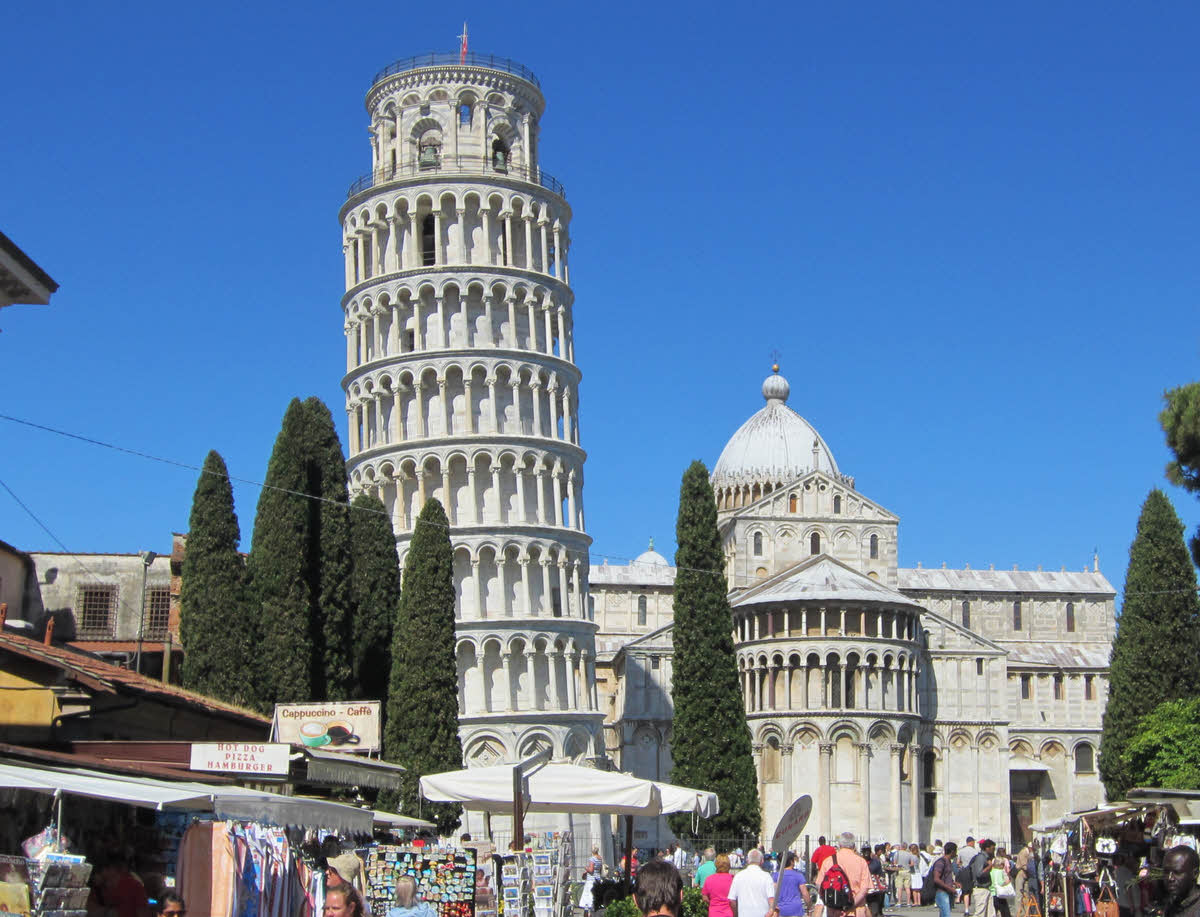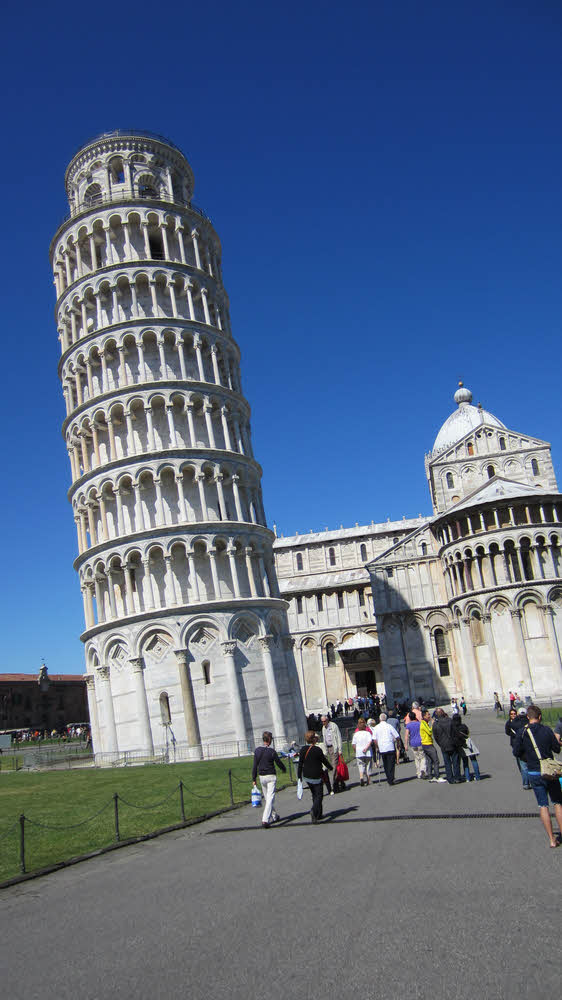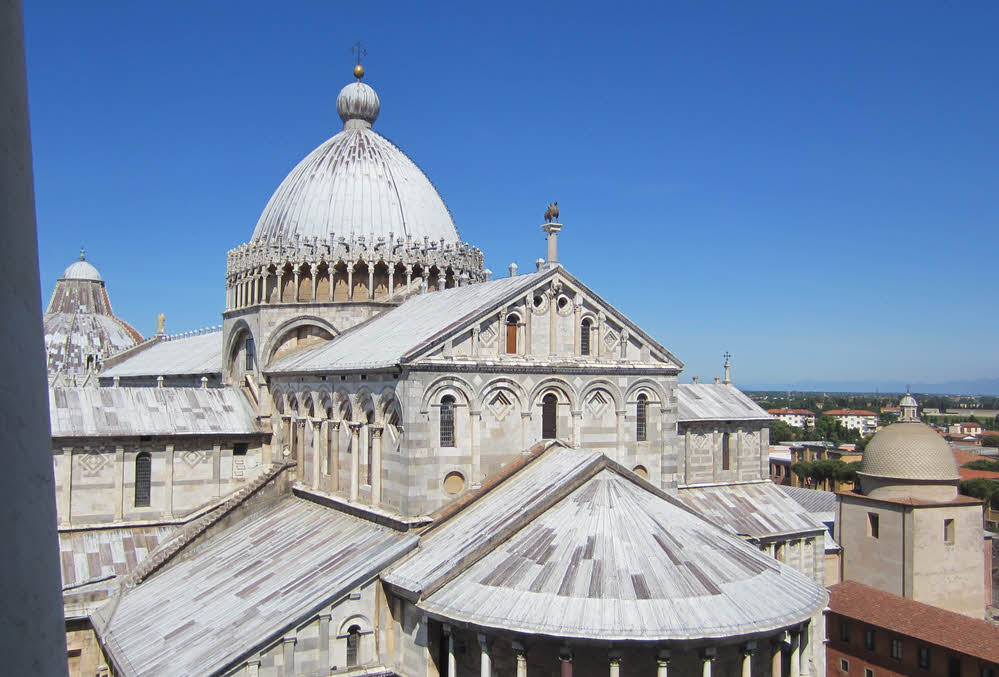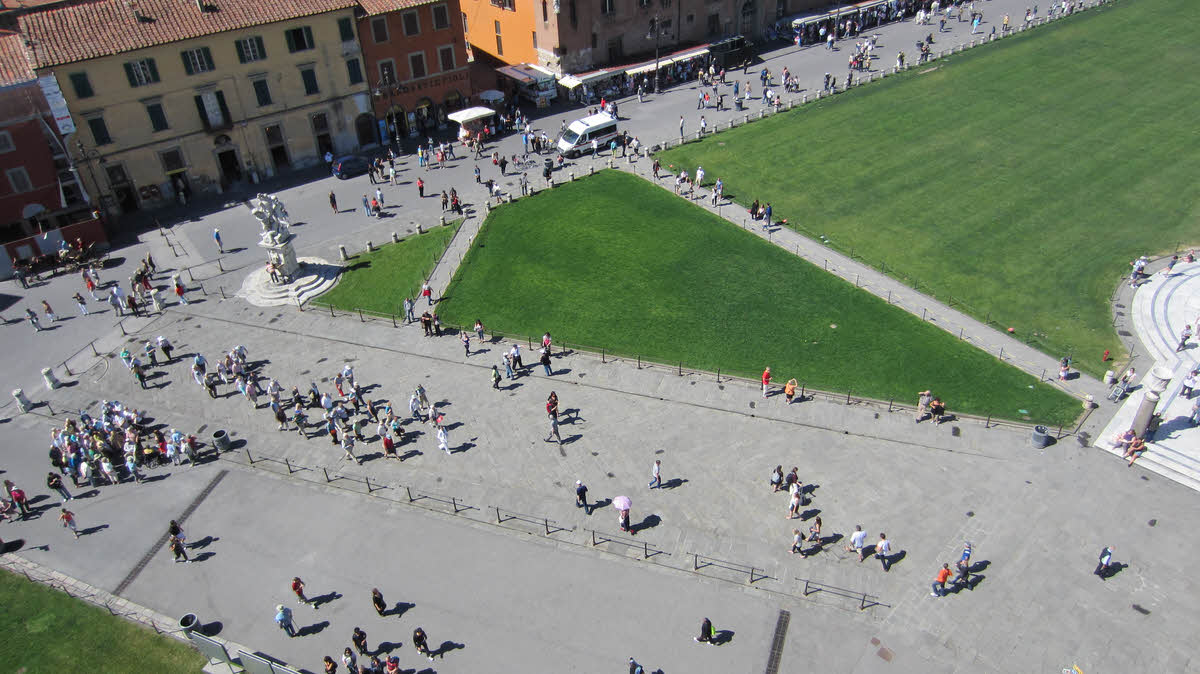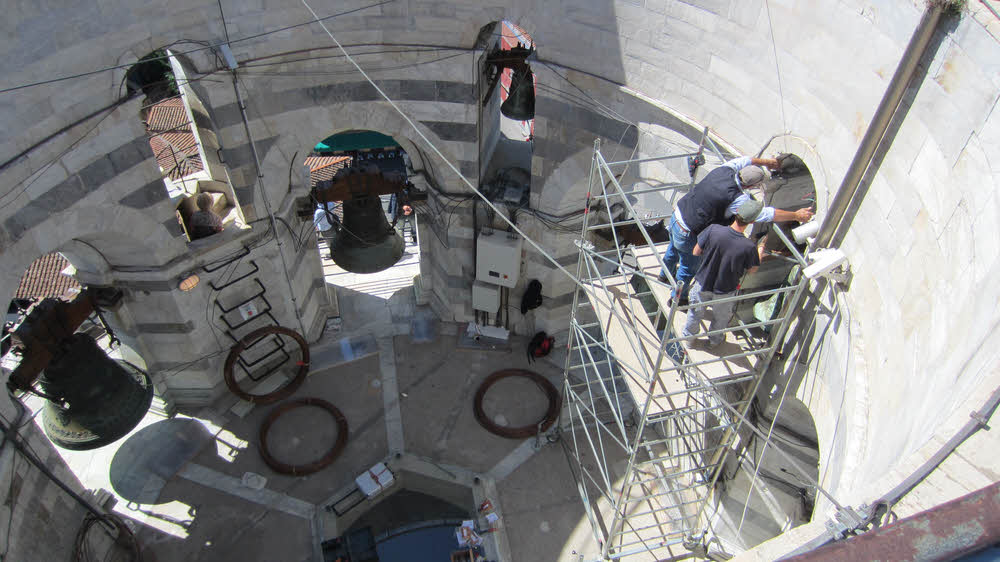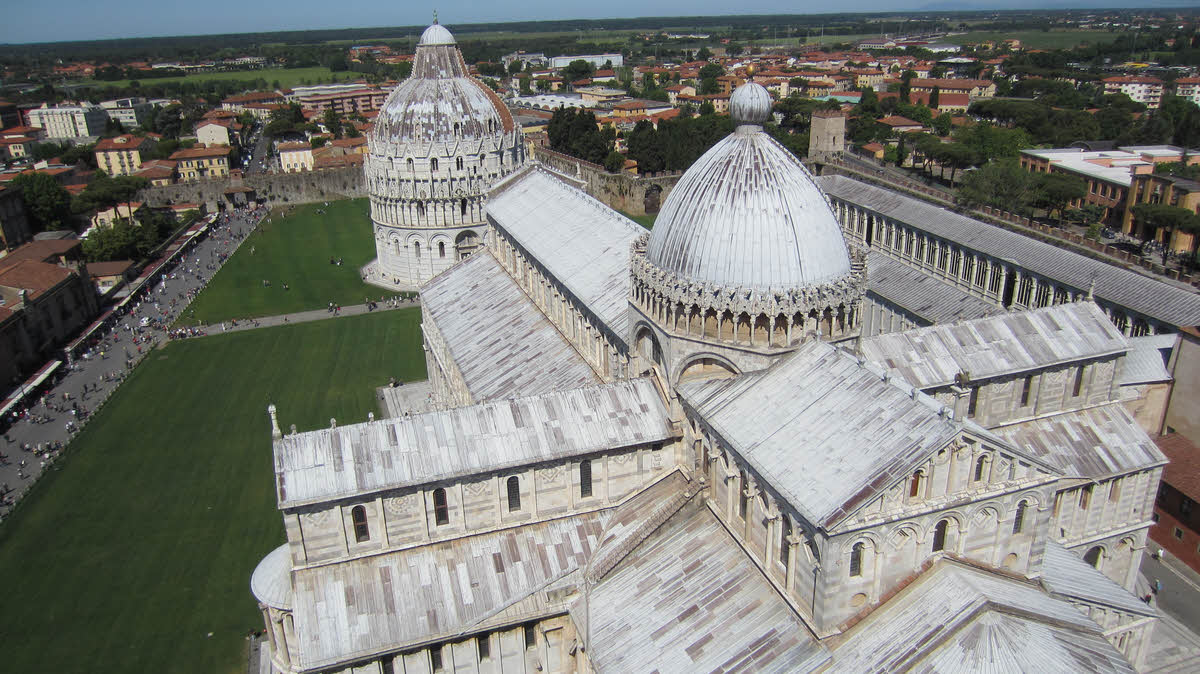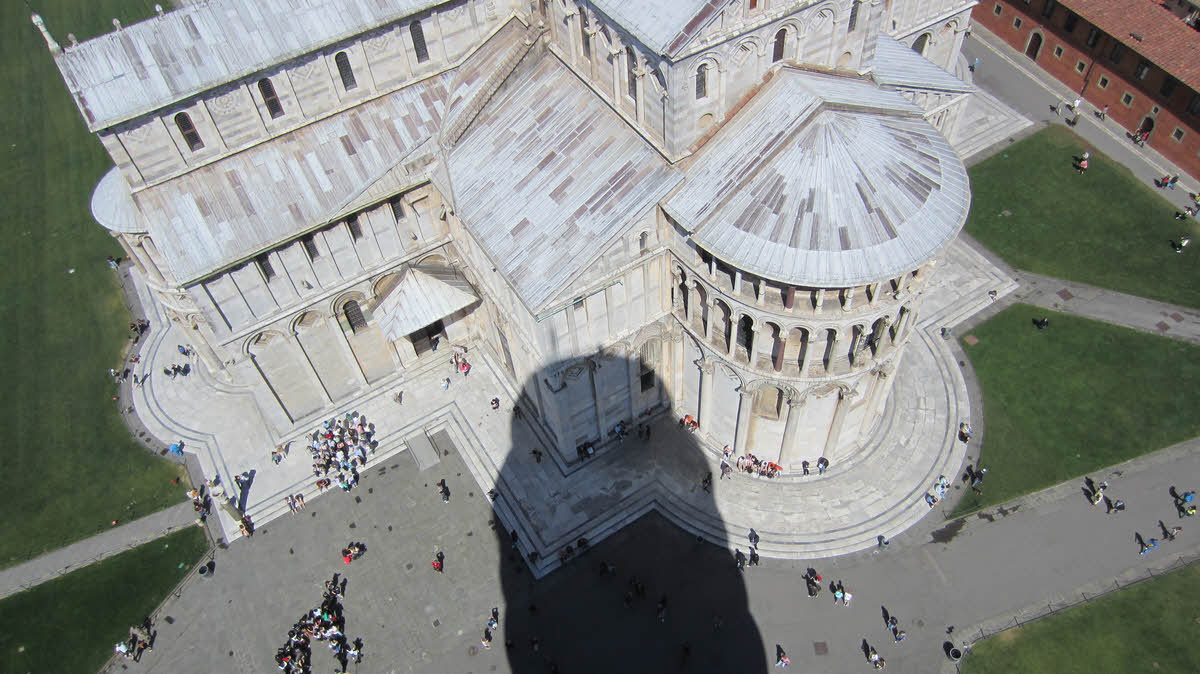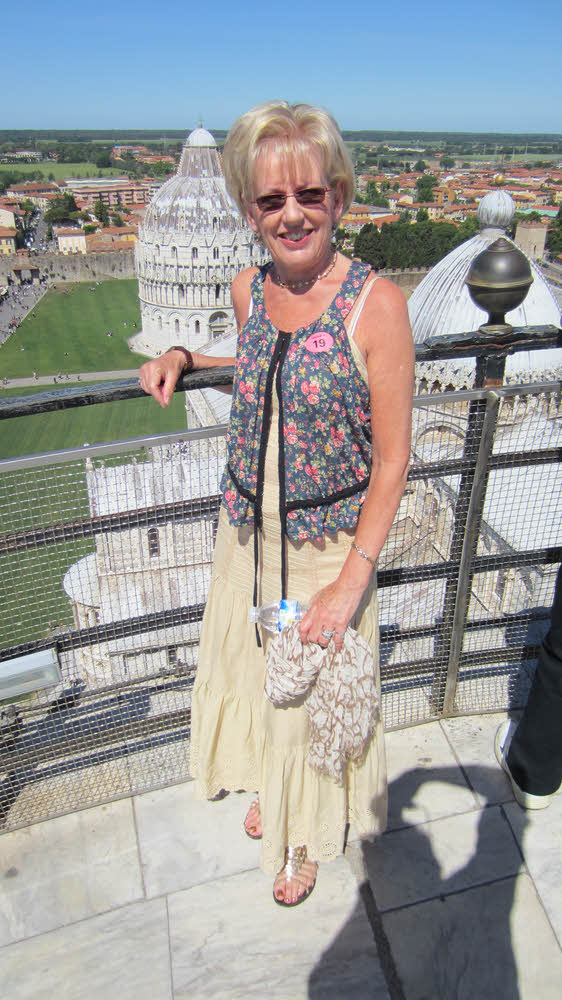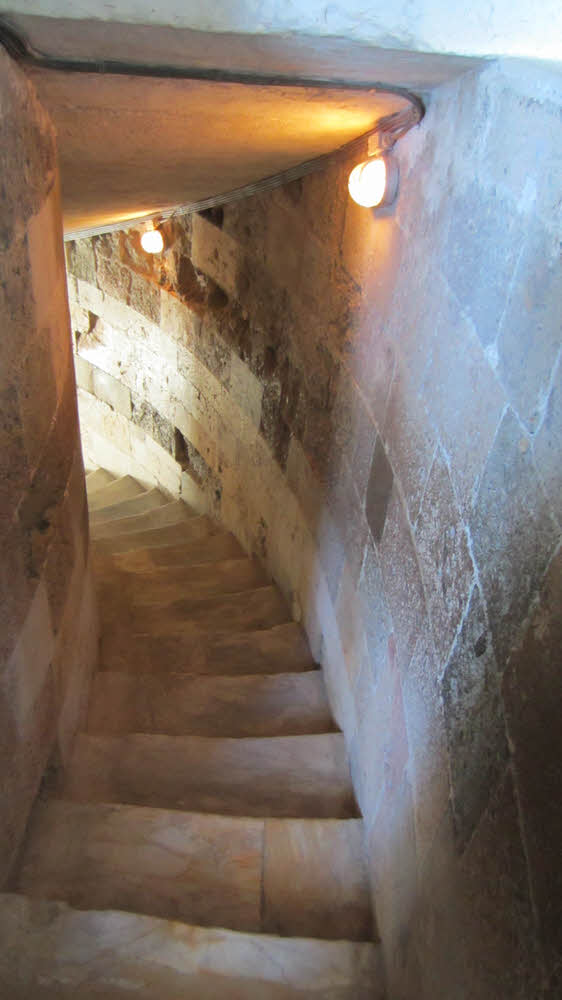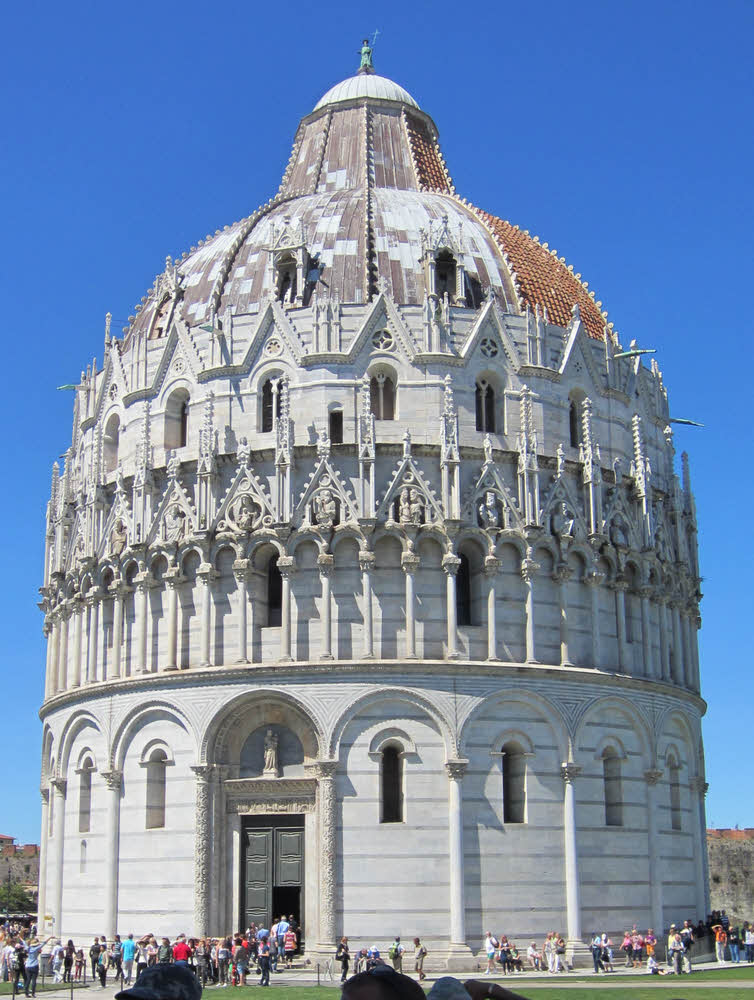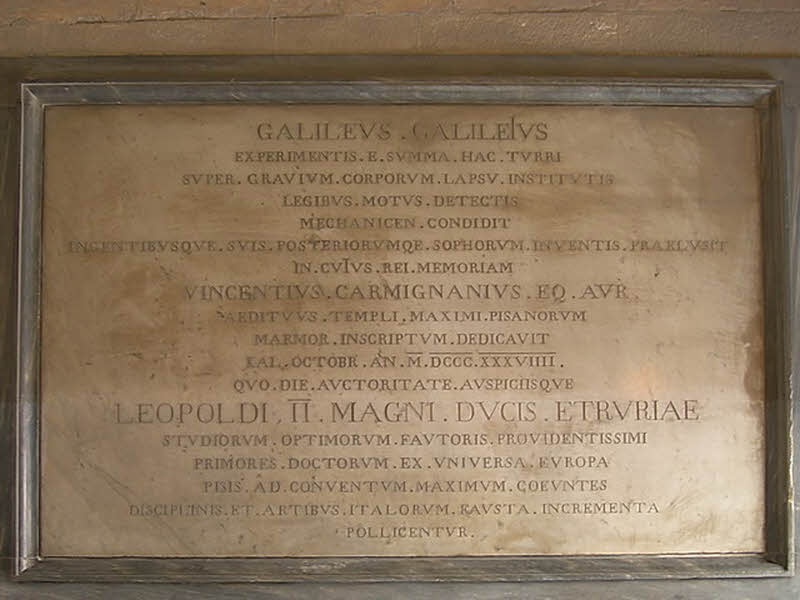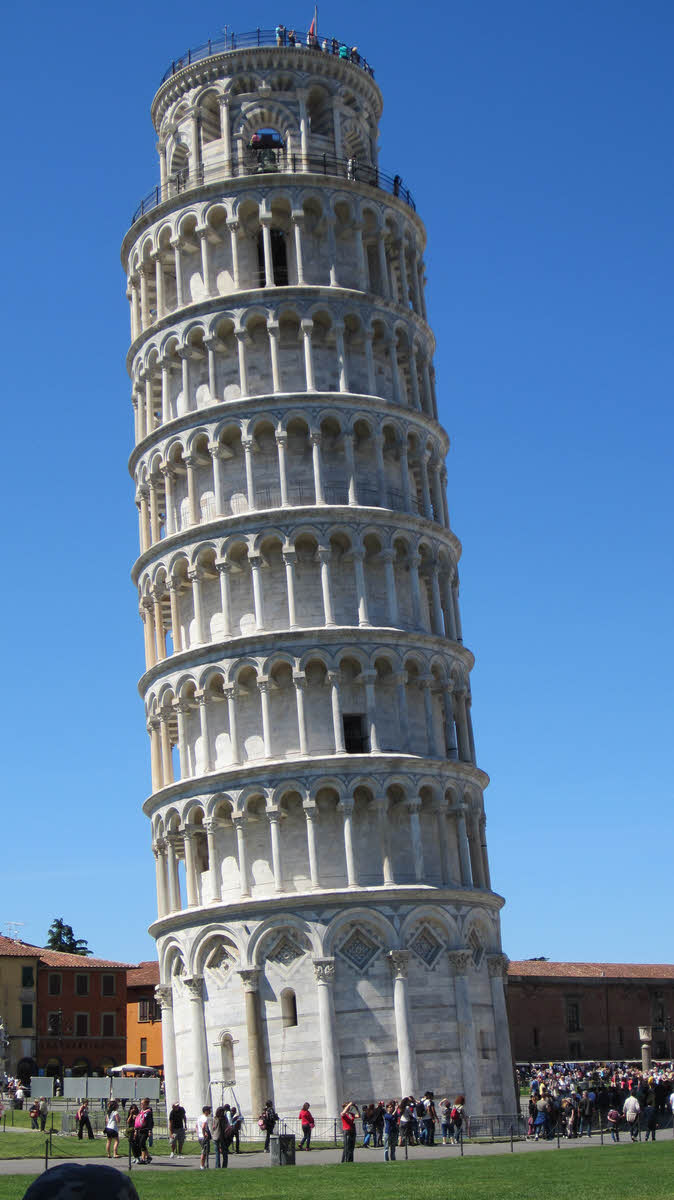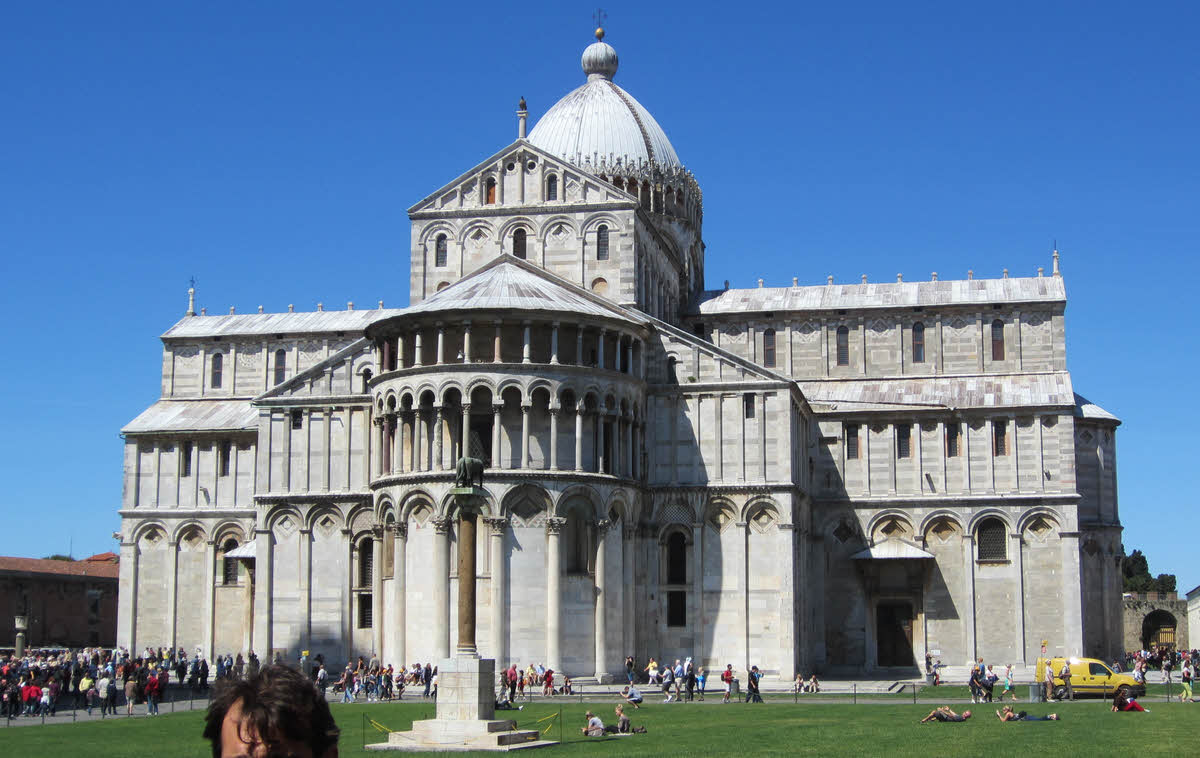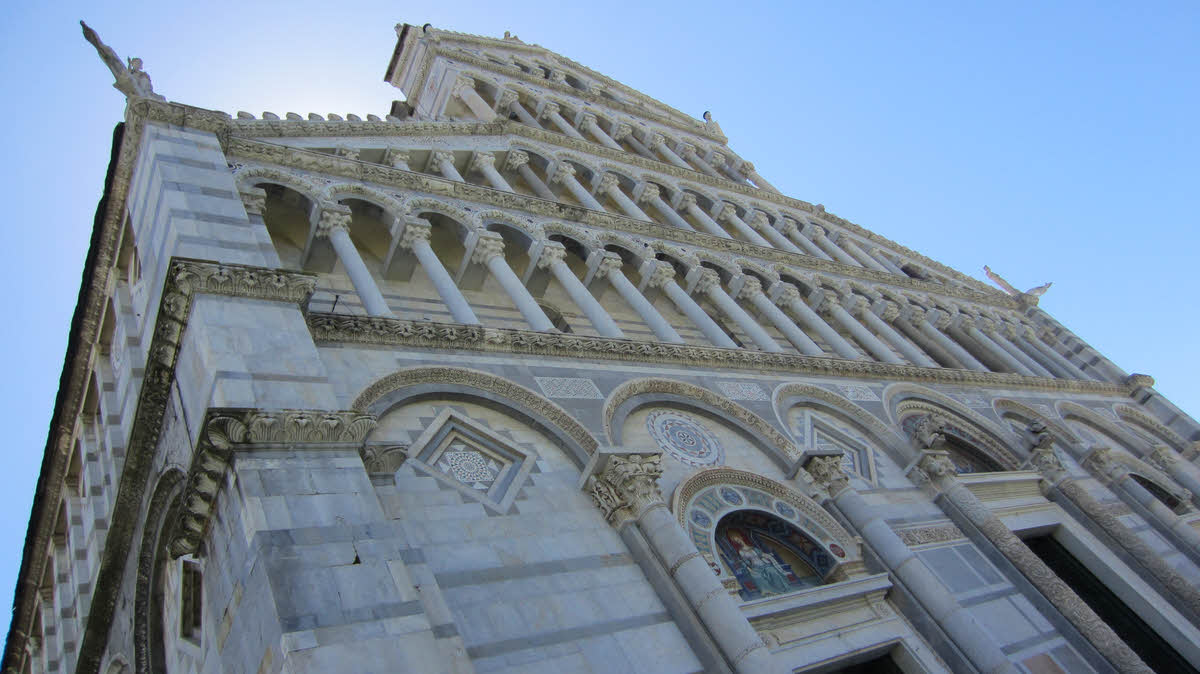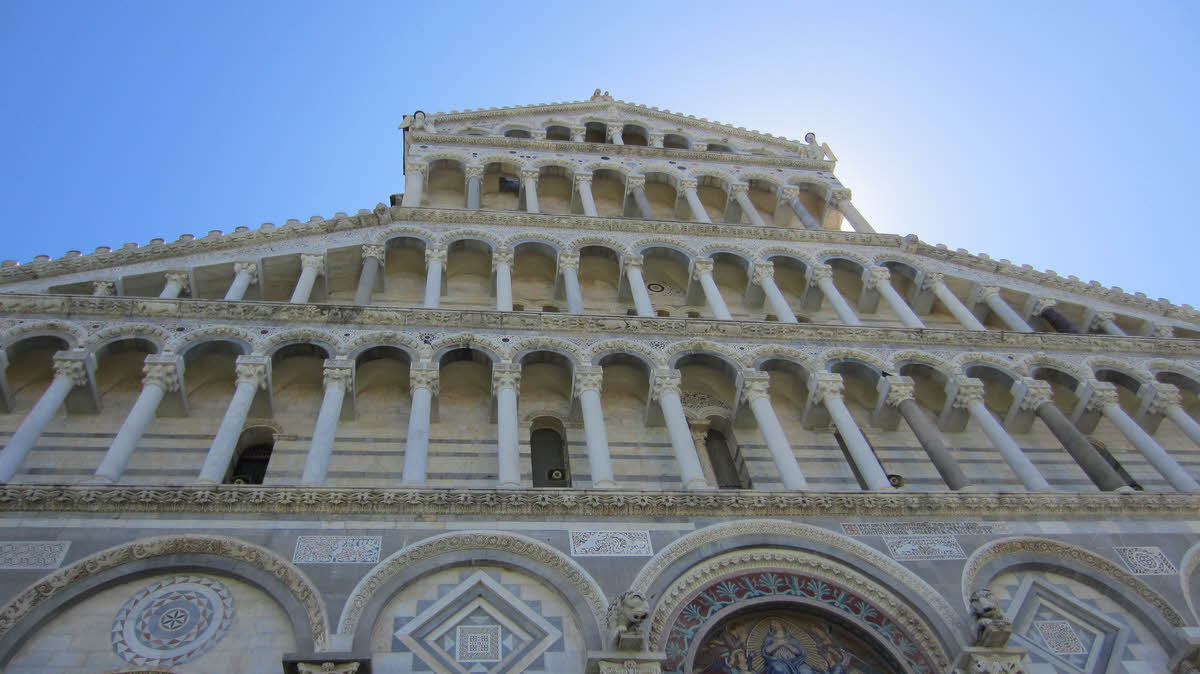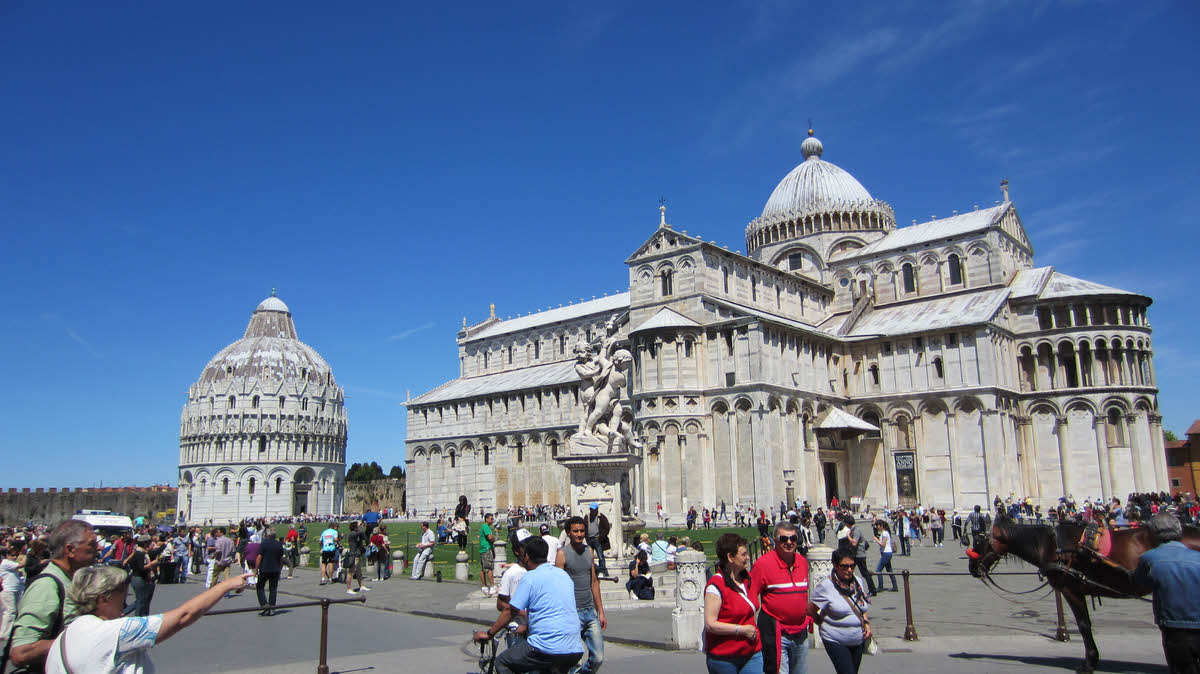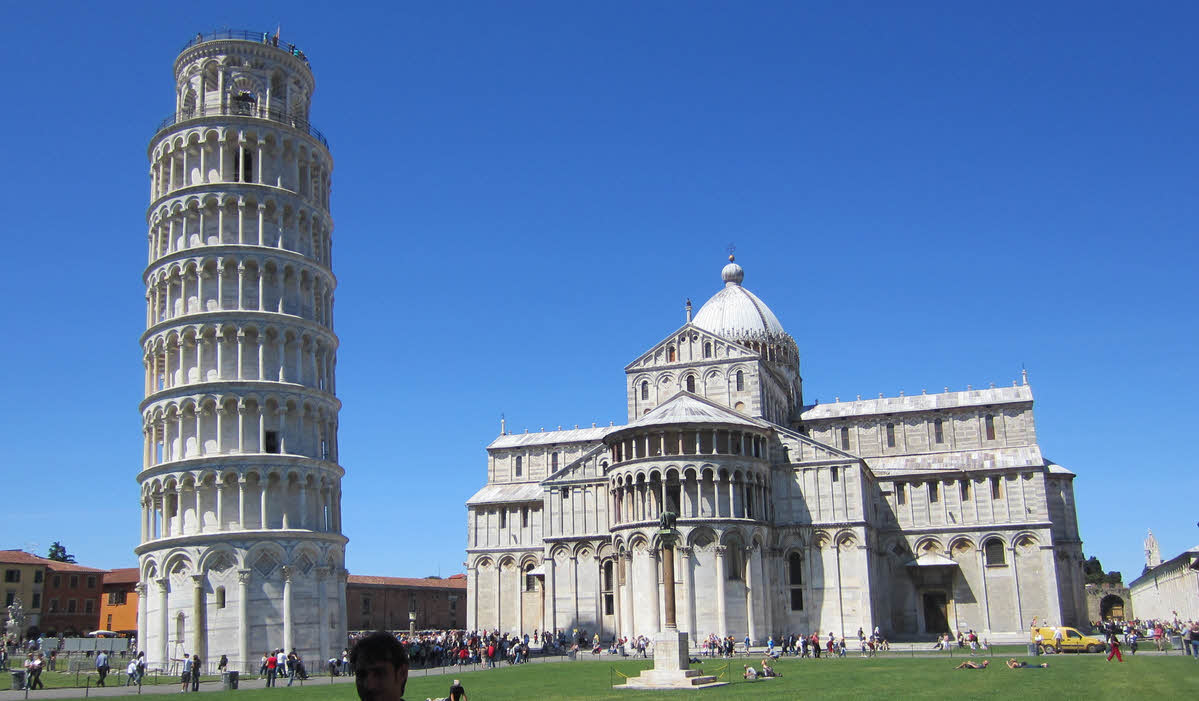Geoff and June do Pisa !
Well this isn't one of my "real" photos. The photographer wanted 25$ for it, - but I sneakily photographed his display photo heh heh !
It's a short coach journey from Livorno, and a short stroll and it hits you !
Okay so I'm leaning the camera ! - Getting closer !
Close enough for you ?
The Leaning Tower of Pisa
On January 5, 1172, Donna Berta di Bernardo, a widow and resident of the house of dell'Opera di Santa Maria, bequeathed sixty soldi to the Opera Campanilis petrarum Sancte Marie. The sum was then used toward the purchase of a few stones which still form the base of the bell tower.
On August 9, 1173, the foundations of the Tower were laid.
Construction of the tower occurred in three stages across 177 years. Work on the ground floor of the white marble campanile began on August 8, 1173, during a period of military success and prosperity. The tower began to sink after construction had progressed to the second floor in 1178. This was due to a mere three-metre foundation, set in weak, unstable subsoil, a design that was flawed from the beginning. Construction was subsequently halted for almost a century, because the Republic of Pisa was almost continually engaged in battles with Genoa, Lucca and Florence. This allowed time for the underlying soil to settle. Otherwise, the tower would almost certainly have toppled. In 1198 clocks were temporarily installed on the third floor of the unfinished construction.
In 1272 construction resumed under Giovanni di Simone, architect of the Camposanto. In an effort to compensate for the tilt, the engineers built upper floors with one side taller than the other. Because of this, the tower is actually curved. Construction was halted again in 1284, when the Pisans were defeated by the Genoans in the Battle of Meloria.
The seventh floor was completed in 1319. It was built by Tommaso di Andrea Pisano, who succeeded in harmonizing the Gothic elements of the bell-chamber with the Romanesque style of the tower. There are seven bells, one for each note of the musical major scale. The largest one was installed in 1655. The bell-chamber was finally added in 1372.
After a phase (1990–2001) of structural strengthening, the tower is currently undergoing gradual surface restoration, in order to repair visual damage, mostly corrosion and blackening. These are particularly pronounced due to the tower's age and its exposure to wind and rain.
The final solution to prevent the collapse of the tower was to slightly straighten the tower to a safer angle, by removing 38 cubic meters (50 cubic yards) of soil from underneath the raised end. The tower was straightened by 45 centimeters (18 inches), returning to its 1838 position. After a decade of corrective reconstruction and stabilization efforts, the tower was reopened to the public on December 15, 2001, and was declared stable for at least another 300 years.
In May 2008, after the removal of another 70 metric tons (77 short tons) of earth, engineers announced that the Tower had been stabilized such that it had stopped moving for the first time in its history. They stated it would be stable for at least 200 years.
Okay let's climb those 300 steps !
View after first 100 steps. You can see the lean by looking at the column on the left.
Getting higher ! Vertigo anyone ?
We're at the top looking at the workman inside.
It's the WOW factor folks !
Cor Blimey !
Yup it's June on top !
Both of us.
It's actually much darker than it looks here. No hand rails and it's tricky going down {especially with high heels}
The Piazza del Duomo ("Cathedral Square") is a wide, walled area at the heart of the city of Pisa, Tuscany, Italy, recognized as one of the main centers for medieval art in the world. Partly paved and partly grassed, it is dominated by four great religious edifices: the Duomo (cathedral), the Campanile (the cathedral's free standing bell tower), the Baptistry and the Camposanto.
It is otherwise known as Piazza dei Miracoli ("Square of Miracles"). This name was created by the Italian writer and poet Gabriele d'Annunzio who, in his novel Forse che si forse che no (1910) described the square in this way: L’Ardea roteò nel cielo di Cristo, sul prato dei Miracoli.
which means: "The Ardea rotated over the sky of Christ, over the meadow of Miracles."
The Baptistry
Plaque in memory of Galileo Galilei's experiments
from Joe Milana, Department of Physics, University of Maryland
The Tale of Galileo and the Tower of Pisa
The story goes that in order to demonstrate to Aristotlean scholars that two balls of different weights fall at the same rate, Galileo dropped a cannon ball and wooden ball from the top of the Tower of Pisa.
This story is apocryphal. While some of his earlier predecessors actually performed this experiment, Galileo did not. However, when Galileo was an old man, one of his students did perform the demonstration to an audience of Aristotlean scholars and found in fact a slight difference in the time the two balls struck the ground. This came as no surprise to Galileo who had already explained the effects of viscosity (wind friction) years before. However the Aristotlean scholars, completely ignorant of the (then new) scientific method, walked away from this demonstration convinced that their old master had been thereby proven correct. Talk about "accommodation" !
from Prof. Joseph W. Dauben
Galileo: The Early Years
Galileo Galilei was born near Pisa in 1564 -- the same year in which Shakespeare was born and the year in which Michelangelo and Calvin died.
After studying at the University of Pisa, he was appointed to the chair of mathematics -- but as this picture of Pisa reminds us, it was a Pisa, of course, that the famous leaning tower might well have suggested Galileo's most famous experiment.
First of all the theory which virtually everyone accepted at the time was the traditional theory of Aristotle, who believed that heavier objects fall more quickly than lighter ones.
Recently it has been fashionable to question whether or not Galileo ever dropped anything off the campanile -- or leaning tower -- of the Duomo in Pisa. If he did so, it certainly could not have been an "experiment" in the modern sense of the word.
Actually, whether or not Galileo ever performed his famous experiment on the leaning tower hardly seems to matter -- a similar experiment- demonstration had already been published by Benedetti Giambattista in 1553, and the test had also been made and published by the Flemish engineer Simon Stevin in 1586. As for Galileo's interest in disproving Aristotle's Theory about falling objects, years later he said that he had first thought about this during a hailstorm, when he notice that both large and small hailstones hit the ground at the same time.
If Aristotle were right, this could only happen if the larger stones dropped from a higher point in the clouds -- but at virtually the same time -- or that the lighter ones started falling earlier than the heavier ones -- neither of which seemed very probable to Galileo. Instead, the simplest explanation was simply that heavy or light, all hailstones fell simultaneously with the same speed.
His work was finally removed from the Inquisiton's banned book list in 1954. The validity of his scientific work was formally recognized by the Roman Catholic Church in 1993.
Back on the ground now.
This shows the "lean" best.
Cathedral
The other side of the Cathedral
Close up
In the Square of Miracles
A glorious Day !
A final view. You can see from this that the Tower is not only leaning - it is curved !


